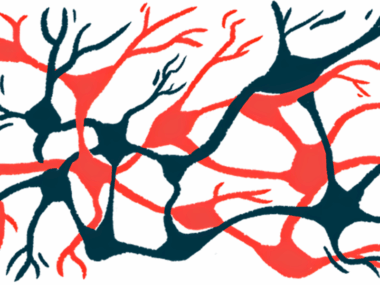New mouse model captures disease progression, from gut to brain
G51D mice show problems with smell and constipation long before gait an issue
Written by |

A new mouse model replicates the symptoms of Parkinson’s disease and its progression in patients, beginning with diminished smell and other disease nonmotor symptoms that are early signs of the neurodegenerative disorder and often evident before problems with gait and balance arrive, scientists report.
Many mouse models overexpress alpha-synuclein — the disease’s troubled protein — “which is adequate to demonstrate that excessive [alpha-synuclein] is toxic but not ideal for learning … specifically where the disease starts and how it progresses,” the researchers, at Texas Children’s Hospital and Baylor College of Medicine in Houston, wrote.
Mice in the model, called the G51D mouse model, show problems with smell and gastrointestinal issues like constipation at 6 months of age, and a significant loss of dopamine and dopaminergic neurons — a disease cause — at 18 months old. “This … mouse model enabled us to dissect the time-dependent cellular vulnerability and the features that accompany the early stages of the disease before the development of [Parkinson’s] motor symptoms,” the scientists wrote.
Their study, “Olfactory deficit and gastrointestinal dysfunction precede motor abnormalities in alpha-Synuclein G51D knock-in mice,” was published in Proceedings of the National Academy of Sciences.
Mice neurons, even when aged, can lack challenges of late-onset diseases
According to the researchers, the model can be used to monitor molecular events underlying Parkinson’s, identify disease biomarkers, and test experimental therapies that might alter disease progression or prevent its development. It is available at request for other researchers working in the field.
The progressive dysfunction and death of dopaminergic neurons, the nerve cells responsible for producing dopamine, a brain chemical messenger involved in motor control, is thought to result from a mix of genetic components. These include changes in the SNCA gene that cause alpha-synuclein buildup inside neurons, and external influences from the environment.
Parkinson’s is mainly characterized by motor symptoms, including tremor, bradykinesia or slowness of movement, and gait and balance issues, but nonmotor symptoms can start years or decades earlier.
Although animal models are essential to studying human diseases, they often don’t exactly mimic human conditions, particularly late-onset neurodegenerative diseases that progress slowly over time.
“The challenge in using mice to model Parkinson’s disease lies in the fact that even though mice can be aged, their neurons, even when they’re two years old [older mice], are not exactly as challenged as human neurons that have been around for decades,” Huda Zoghbi, MD, director of Texas Children’s Duncan Neurological Research Institute, said in a hospital news release. “So sometimes you can put the same mutation in the mouse and you don’t see the same thing you’ve seen in the human probably because the disease takes a long time to manifest.”
Loss of smell, constipation evident in mice months before gait issues
To create the model, researchers used CRISPR-Cas9 technology — a gene editing system that allows scientists to add, remove, or change specific sections of a gene — to introduce a known Parkinson’s disease-causing SNCA mutation, called G51D, into the native SNCA gene of mice.
This allowed for “the gene to be expressed in the right time, at the right place, and at the right dosage,” said Youngdoo Kim, PhD, a postdoctoral associate and the study’s lead author.
Mice exhibited disease progression that closely resembled the course seen in patients. Alpha-synuclein accumulation began in the olfactory and gastrointestinal tract at age 3 months, leading to problems with smell and gastrointestinal issues like signs of constipation at 6 months of age.
When they were between 9 and 12 months old, the mice started showing gait and balance issues, as well as signs of increased brain inflammation, particularly in regions involved in motor control. Between 12 and 18 months, the loss of dopaminergic neurons and dopamine were evident in these regions.
“These data suggest that neuroinflammation and neuronal dysfunction disrupt motor function in [Parkinson’s disease] mice models well before significant dopamine loss,” the researchers wrote.
Model captures molecular events that precede ‘dysfunction in the brain’
“Still, future studies are needed to understand what drives the delayed increase in α-Syn [alpha-synuclein] phosphorylation, which is not detectable at 3 mo[nths of age] (outside of the olfactory system) and becomes apparent after 12 mo[nths] of age in the deeper layer of the cortex, hippocampus, and substantia nigra in the G51D mice,” they added. Of note, phosphorylation refers to a biochemical change in a molecule, often a protein, that affects its function and activity.
Zoghbi called the mice “the most accurate model of Parkinson’s disease available today,” one that best captures “the biological changes during … disease progression to better understand the sequence of molecular events leading to the dysfunction in the brain.
“This new model will be a valuable tool to help identify new Parkinson’s disease biomarkers and to test a range of therapeutics and non-pharmacological interventions that could alter the course of Parkinson’s disease progression, and one-day, maybe even prevent the disease,” she added.






